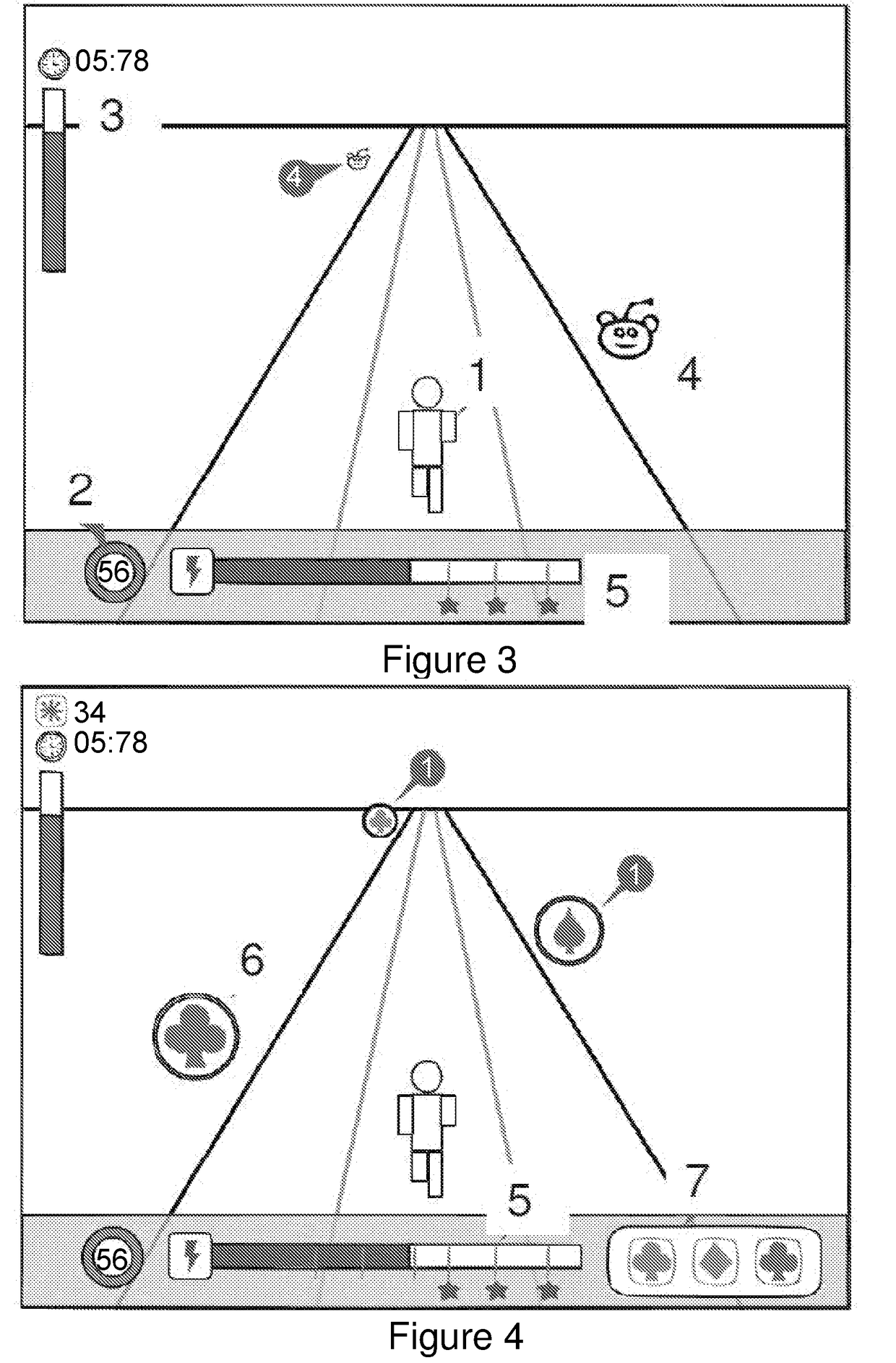System and program for cognitive skill training
a cognitive skill and program technology, applied in the field of system and program for cognitive skill training, can solve the problems of preventing a child from being able to coherently function, difficulty in attention and impulse inhibition control, and missing important cues of word boundaries and meanings, so as to improve user engagement, improve cognitive skill development, and improve cognitive skill development. the effect of apprehension
- Summary
- Abstract
- Description
- Claims
- Application Information
AI Technical Summary
Benefits of technology
Problems solved by technology
Method used
Image
Examples
example 1
Maintenance Game Elements
[0157]An example of the kind of environment and tasks in which “Attention Maintenance” skills are trained and assessed is provided in FIG. 3. The user avatar 1 runs forward along a path at a speed derived from the user's level of attention states as measured and communicated through the EEG headset to the computer or tablet 2. A timer 3 records the duration of the run and a progress meter shows the distance to the end of the path. In this example, the user must utilize Self-Regulation to persevere until the end of the path and Attention Maintenance to achieve a faster completion time. Distracting objects and creatures 4 appear in the path, and the user must ignore the distractions to sustain his or her raised attention state level and speed through that segment. A “Power Meter”5 measures the user's Attention Maintenance skill level; the meter fills at a rate that reflects a composite between attention state level and challenge task performance, (e.g., it fil...
example 2
l Inhibition Game Elements
[0158]An example of the type of environment and tasks in which “Behavioral Inhibition” skills are trained and assessed is provided in FIG. 4. Objects with specific visual characteristics 6 appear above the path and move toward the user avatar. A list of target objects 7 appears in the user's display. In this example, the user must tap on an object when its visual characteristics match one of the targets, but utilize Behavioral Inhibition to let objects pass that do not match. In some cases, the visual characteristics of an object are not visible to the user, and only become visible when the user approaches the object. In this case, when a user selects the object prior to its revealing its visual characteristic, that response is identified as an impulsive response. The Power Meter 5 in this environment measures the user's Behavioral Inhibition skill level; the meter fills faster when the user makes correct actions on the object, and when the user makes many ...
example 3
Attention Game Elements
[0159]An example of the type of environment and challenge tasks in which “Selective Attention” skills are trained and assessed is provided in FIG. 5. Groups of objects with specific visual characteristics 6 appear above the path and move toward the user avatar. A list of target objects 7 appears in the user's display. In this example, the user must utilize Selective Attention to identify the object within the group that matches one of the targets, and select that object. The Power Meter 5 in this environment measures the user's Selective Attention skill level; the meter fills faster when the user makes correct actions on the object groups, and when the user makes many successive correct actions. A minimum success score on the Power Meter is required to move on to the next mission.
PUM
 Login to View More
Login to View More Abstract
Description
Claims
Application Information
 Login to View More
Login to View More - R&D
- Intellectual Property
- Life Sciences
- Materials
- Tech Scout
- Unparalleled Data Quality
- Higher Quality Content
- 60% Fewer Hallucinations
Browse by: Latest US Patents, China's latest patents, Technical Efficacy Thesaurus, Application Domain, Technology Topic, Popular Technical Reports.
© 2025 PatSnap. All rights reserved.Legal|Privacy policy|Modern Slavery Act Transparency Statement|Sitemap|About US| Contact US: help@patsnap.com



